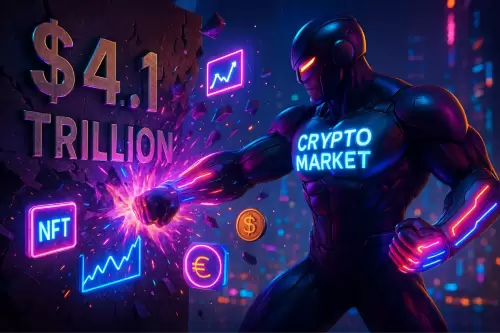 |
|
 |
|
 |
|
 |
|
 |
|
 |
|
 |
|
 |
|
 |
|
 |
|
 |
|
 |
|
 |
|
 |
|
 |
|
Cryptocurrency News Articles
XRP's Deflationary Supply Model Could Play a Key Role in Driving Future Value Appreciation
May 28, 2025 at 04:05 am
This content is meant to inform and should not be considered financial advice. The views expressed in this article may include the author's personal opinions and do not represent Times Tabloid's opinion.

Recently, there's been a buzz in the crypto community about XRP's unique deflationary supply model and how it could play a key role in driving future value appreciation.
One well-known XRP researcher, known on social media as SMQKE, has brought renewed attention to this aspect of the token's economic structure.
According to official data, over 13.9 million XRP tokens have been destroyed through this process since the network launched in 2011. These tokens are not reallocated or recovered, making their removal permanent. XRP Ledger documentation and third-party research funded by Ripple also confirm that no mechanisms exist to replace burned tokens or inflate the supply.
At present, XRP's total supply stands at approximately 99.98 billion, indicating only a modest reduction since inception. Critics argue that the burn rate is too slow to significantly impact market dynamics, but proponents contend that increased transaction volume over time could make this supply contraction more meaningful, especially as global adoption grows.
At the same time, each transaction on the XRP Ledger is executed in five seconds on average, and the average transaction fee remains at $0.0001, making it one of the most efficient options for value transfer. This performance gives XRP an advantage over legacy systems such as SWIFT, which can take several days and charge significant fees for international transfers.
According to crypto analytics firm CCData, in April 2024, USDC had a market cap of $42.7 billion and an average daily trading volume of $1.8 billion. In comparison, XRP had a market cap of $27 billion and an average daily trading volume of $1.4 billion.
Interoperability and cross-border use cases are also frequently cited strengths of XRP in discussions online. Its capacity to interact across multiple blockchain ecosystems is considered a strategic advantage in the landscape of decentralized finance.
These capabilities are expected to become increasingly relevant as central bank digital currencies (CBDCs) like China's digital yuan and the U.S. dollar's stablecoin are deployed in more regions around the world.
As institutional interest grows and the number of transactions increases, the deflationary mechanism may begin to exert greater influence on supply dynamics. In theory, a continued rise in usage without an increase in supply could result in upward price pressure.
Currently, the asset is trading at $2.33, showing a slight increase of 0.12% in the past 24 hours. Despite short-term price fluctuations, supporters believe that the underlying fundamentals, including deflationary supply, expanding use cases, and cross-chain capabilities, position the token for significant growth over time.
Disclaimer:info@kdj.com
The information provided is not trading advice. kdj.com does not assume any responsibility for any investments made based on the information provided in this article. Cryptocurrencies are highly volatile and it is highly recommended that you invest with caution after thorough research!
If you believe that the content used on this website infringes your copyright, please contact us immediately (info@kdj.com) and we will delete it promptly.






























































